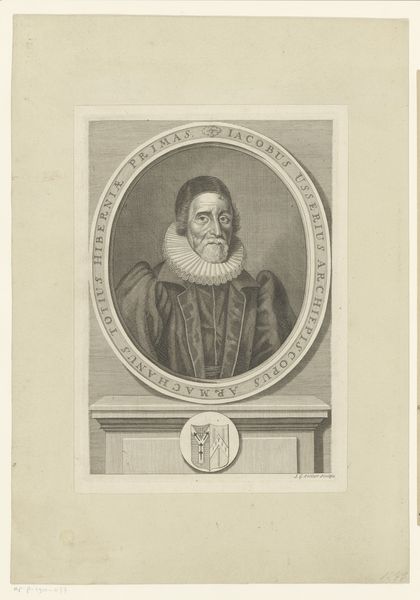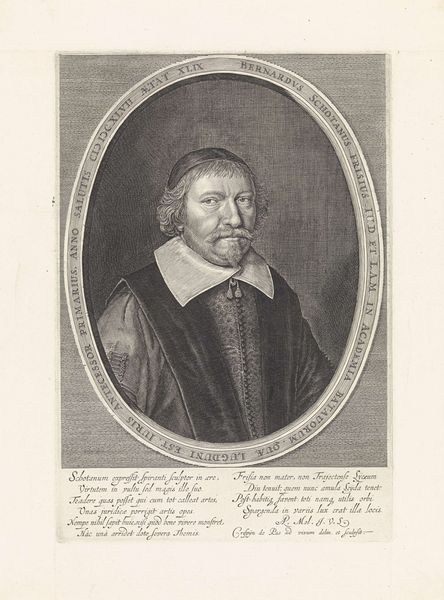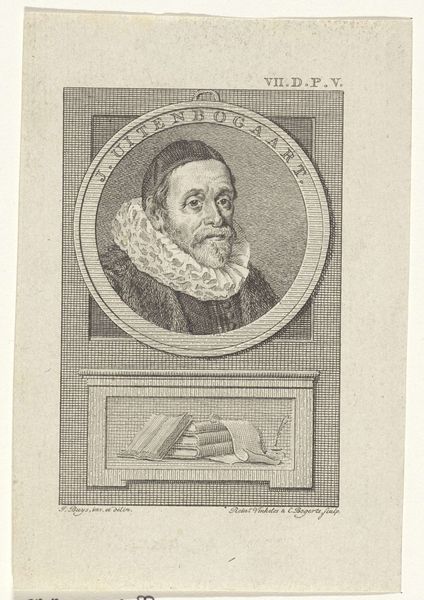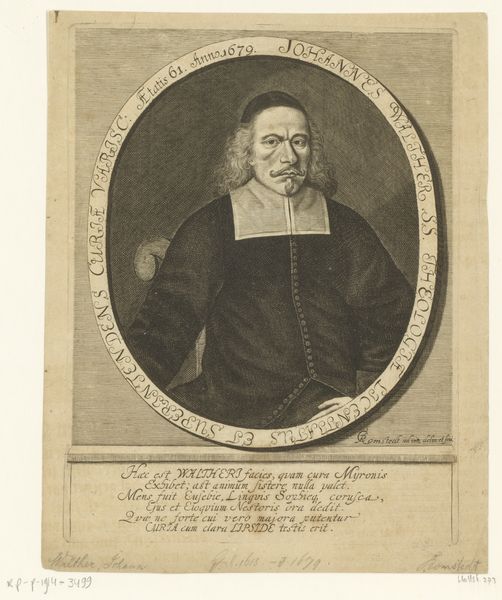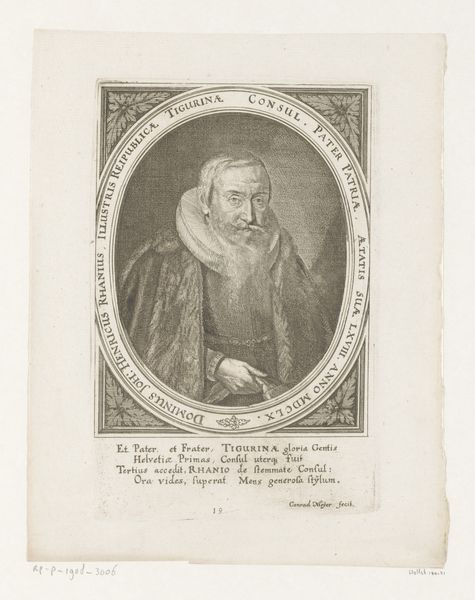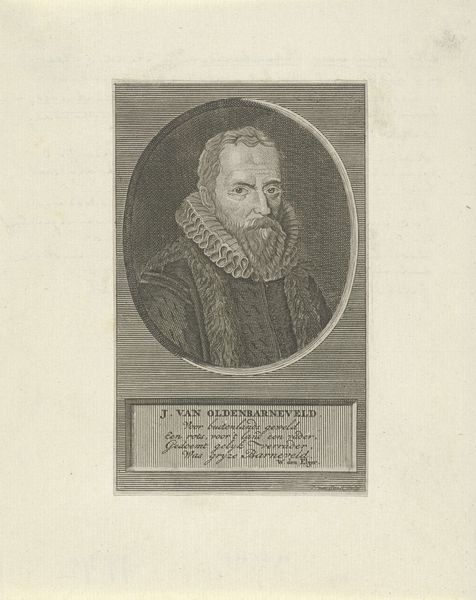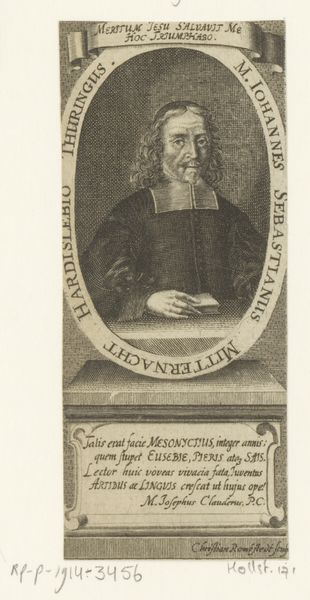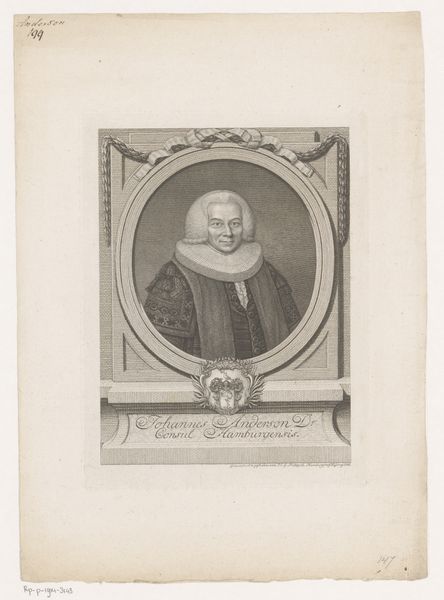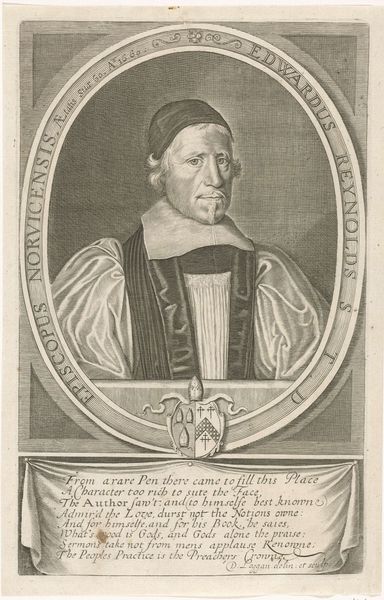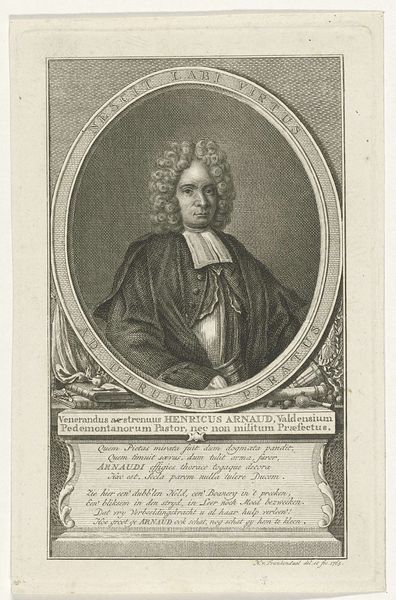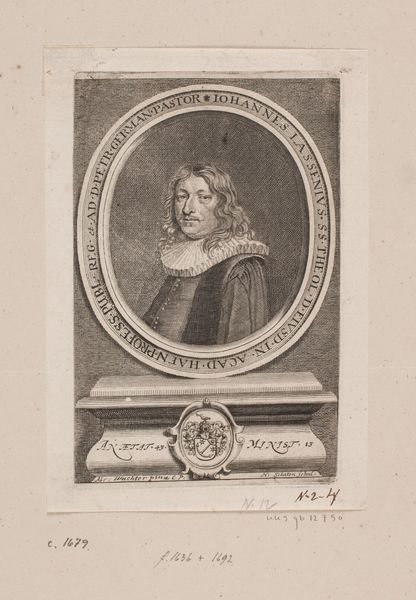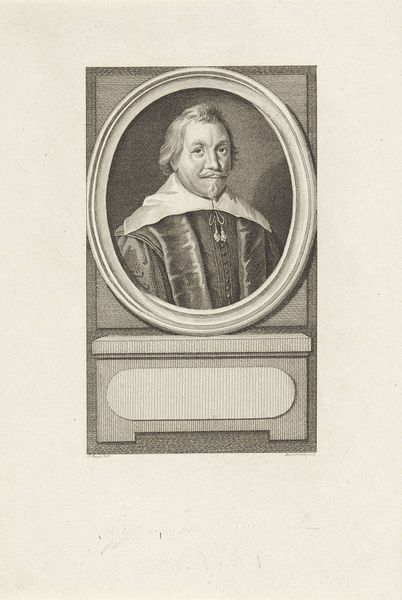
engraving
#
portrait
#
baroque
#
history-painting
#
engraving
Dimensions: height 190 mm, width 141 mm
Copyright: Rijks Museum: Open Domain
Curator: Here we have an engraving dating from 1735, a portrait of Heinrich Müller by Jan Caspar Philips, currently residing at the Rijksmuseum. Editor: It's striking! The circular frame, combined with the severe expression, gives it an almost claustrophobic feeling. Curator: That may have to do with Philips positioning Müller within a complex system of social signification. This isn't just a depiction; it's an assertion of Müller's status. The lettering and biblical quotation indicate his significance as a clergyman and intellectual figure of his time. Editor: The engraving work itself is fascinating. Look at the contrasting textures—the delicate ruff around his neck versus the heavy fabric of his robe. Curator: Absolutely. The baroque style is evident in the attention to detail, especially in rendering texture and light through a distinct linearity. Editor: Though the baroque might denote a heightened expression and dramatic effect, his face remains rather restrained. His steady gaze offers only a glimmer of personality. Do you find it surprising for baroque era? Curator: I would propose, and others suggest that that very restraint is communicating a particular message about decorum and learning. These weren't characteristics to be presented through extravagant emotions; his integrity stems from wisdom and self-discipline. The text refers to an integration of sadness and happiness and mirrors the controlled persona being offered. It could even be a strategy to invite a reading of a melancholic temperament marked by controlled expression. Editor: Interesting. So even within the flourish of Baroque, the control serves a purpose beyond mere aesthetics. It underscores a deliberate performance of persona reflecting specific values. Curator: Precisely! It speaks volumes about the values that were elevated in intellectual and religious circles of that era, reflecting institutional powers. Editor: Understanding how portraits functioned as more than just likenesses certainly enriches the viewing experience. It prompts us to think about their cultural roles as carriers of ideologies. Curator: Indeed, the image underscores that all art acts as a socio-cultural document.
Comments
No comments
Be the first to comment and join the conversation on the ultimate creative platform.

